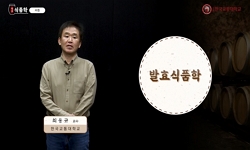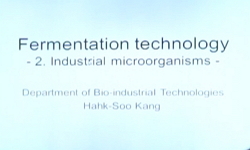최근에는 식품은 단순히 생명유지뿐만 아니라 기능적인 측면이 주목받고 실정이다. 인체는 대사를 통해 불안정한 활성산소가 체내 스트레스를 일으킬 수 있으나, 항산화능을 갖는 식품섭취...
http://chineseinput.net/에서 pinyin(병음)방식으로 중국어를 변환할 수 있습니다.
변환된 중국어를 복사하여 사용하시면 됩니다.
- 中文 을 입력하시려면 zhongwen을 입력하시고 space를누르시면됩니다.
- 北京 을 입력하시려면 beijing을 입력하시고 space를 누르시면 됩니다.
https://www.riss.kr/link?id=T16623085
- 저자
-
발행사항
삼척 : 강원대학교 대학원, 2023
-
학위논문사항
학위논문(석사) -- 강원대학교 대학원 일반대학원 , 식품영양학과 , 2023. 2
-
발행연도
2023
-
작성언어
한국어
- 주제어
-
KDC
574.8055 판사항(6)
-
발행국(도시)
강원특별자치도
-
기타서명
Comparison of on-line HPLC method and non-HPLC method for ABTS radical scavenging activity measurement and its application for measuring antioxidant activity of kimchi
-
형태사항
ⅶ, 102 L. : 삽도 ; 26 cm
-
일반주기명
강원대학교 논문은 저작권에 의해 보호받습니다.
지도교수:장기효
참고문헌 : p. -
UCI식별코드
I804:42002-000000033335
- 소장기관
-
0
상세조회 -
0
다운로드
부가정보
국문 초록 (Abstract)
9종 항산화물질의 반응성을 파악하기 위하여 항산화물질과 ABTS 라디칼 용액을 반응시킨 후, 60초간 지속적으로 734nm 파장에서 흡광도를 측정하였다. 또한, on-line HPLC-ABTS assay의 경우에는 2가지 반응시간(17.5초와 35초)에서의 9종 시료들의 ABTS 라디칼 소거능을 비교분석하였다. 이후 on-line HPLC-ABTS assay를 실제 식품시료에 적용하기 위하여 부원료의 가감이 간편하며, 발효식품인 김치를 선정하여 부원료의 함량과 발효 진행정도에 따른 김치시료들의 총 환원력, 총 플라보노이드 함량, DPPH 라디칼 소거능, ABTS 라디칼 소거능을 분광계를 이용한 분석을 실시하였으며, on-line HPLC-ABTS assay 또한 실시하였다.
분광계를 활용한 ABTS 라디칼 소거능 측정법에서 9종 항산화물질들은 최대라디칼 소거능과 초기 라디칼 소거 속도가 시료별로 달라졌으며 반응시간이 경과함에 따라 항산화능의 정도가 다르게 나타났다. On-line HPLC-ABTS assay의 경우에는 17.5초 반응시간과 35초 반응시간의 ABTS 라디칼 소거능 결과들에 대한 상관관계가 0.985로 매우 높게 나타났다(p<0.01). 부원료의 함량을 다르게하여 제조한 김치로 진행한 항산화 실험결과는 발효적 측면보다 원료적 측면, 구체적으로는 고춧가루 사용량이 김치의 항산화능에 크게 기여하는 것으로 나타났다. 또한 분광계를 활용한 ABTS 라디칼 소거능 측정과 총 환원력, 총 플라보노이드 함량, DPPH 라디칼 소거능, on-line HPLC-ABTS assay간의 상관관계는 각각 0.962, 0.937, 0.917, 0.588로 각각 나타나서 실험결과의 일관성을 보였으며(p<0.01), 분광계를 활용한 ABTS 라디칼 소거능 측정과 on-line HPLC-ABTS aasay가 상호보완적으로 사용될 수 있는 방법임을 보여주었다.
최근에는 식품은 단순히 생명유지뿐만 아니라 기능적인 측면이 주목받고 실정이다. 인체는 대사를 통해 불안정한 활성산소가 체내 스트레스를 일으킬 수 있으나, 항산화능을 갖는 식품섭취를 통해 이를 억제할 수 있다. 이에 따라 식품의 항산화능이 대중들의 관심을 받고 있으며, 이를 측정하기 위한 시도가 계속되어왔다. 하지만 일반적으로 실행되는 항산화 측정 방법들은 식품 전체의 항산화능을 측정하기 때문에 식품들의 개별적인 성분들의 항산화적 효능을 파악하기 힘들다는 제한점이 있다. 이에 본 연구는 물질을 개별적으로 분리하여 검출하는 on-line HPLC에 접목된 ABTS 라디칼 소거능 측정법을 이용하였다. ABTS 라디칼 소거능 측정은 충분한 반응시간이 주어져야 하는 실험법으로 on-line HPLC-ABTS assay의 경우에는 기계적 한계로 인해 충분한 반응 시간을 보장할 수 없다는 제한점이 있다. 따라서, 분광계를 이용한 실험법과 on-line HPLC에 연계된 방법을 비교 분석하여 상호 보완하고자 하였다.
9종 항산화물질의 반응성을 파악하기 위하여 항산화물질과 ABTS 라디칼 용액을 반응시킨 후, 60초간 지속적으로 734nm 파장에서 흡광도를 측정하였다. 또한, on-line HPLC-ABTS assay의 경우에는 2가지 반응시간(17.5초와 35초)에서의 9종 시료들의 ABTS 라디칼 소거능을 비교분석하였다. 이후 on-line HPLC-ABTS assay를 실제 식품시료에 적용하기 위하여 부원료의 가감이 간편하며, 발효식품인 김치를 선정하여 부원료의 함량과 발효 진행정도에 따른 김치시료들의 총 환원력, 총 플라보노이드 함량, DPPH 라디칼 소거능, ABTS 라디칼 소거능을 분광계를 이용한 분석을 실시하였으며, on-line HPLC-ABTS assay 또한 실시하였다.
분광계를 활용한 ABTS 라디칼 소거능 측정법에서 9종 항산화물질들은 최대라디칼 소거능과 초기 라디칼 소거 속도가 시료별로 달라졌으며 반응시간이 경과함에 따라 항산화능의 정도가 다르게 나타났다. On-line HPLC-ABTS assay의 경우에는 17.5초 반응시간과 35초 반응시간의 ABTS 라디칼 소거능 결과들에 대한 상관관계가 0.985로 매우 높게 나타났다(p<0.01). 부원료의 함량을 다르게하여 제조한 김치로 진행한 항산화 실험결과는 발효적 측면보다 원료적 측면, 구체적으로는 고춧가루 사용량이 김치의 항산화능에 크게 기여하는 것으로 나타났다. 또한 분광계를 활용한 ABTS 라디칼 소거능 측정과 총 환원력, 총 플라보노이드 함량, DPPH 라디칼 소거능, on-line HPLC-ABTS assay간의 상관관계는 각각 0.962, 0.937, 0.917, 0.588로 각각 나타나서 실험결과의 일관성을 보였으며(p<0.01), 분광계를 활용한 ABTS 라디칼 소거능 측정과 on-line HPLC-ABTS aasay가 상호보완적으로 사용될 수 있는 방법임을 보여주었다.
다국어 초록 (Multilingual Abstract)
After reacting the 9 antioxidant compounds with the ABTS radical solution, the absorbance was continuously measured at a wavelength of 734 nm for 60 seconds. In addition, in the case of on-line HPLC-ABTS assay, the ABTS radical scavenging activity of nine samples was compared at two reaction times (17.5 seconds and 35 seconds).
using the optimized on-line HPLC-ABTS assay conditions, we measured ABTS radical scavenging activities of Kimchi samples. Total reduction capacity of kimchi samples, total flavonoid content, DPPH radical scavenging activity and ABTS radical scavenging activity were also measured by spectrophotometric assay.
In the ABTS radical scavenging ability measurement using a spectrophotometer, the maximum radical scavenging ability and initial radical scavenging speed of nine antioxidants varied from sample to sample, and the degree of antioxidant ability was different as the reaction time proceed. In the case of on-line HPLC-ABTS assay, the correlation between the results of ABTS radical elimination of 17.5 seconds reaction time and 35 seconds reaction time was very high at 0.985 (p<0.01). The results of the antioxidant experiment conducted with Kimchi prepared with different ingredients showed that amount of red pepper powder contributed greatly to the antioxidant ability of kimchi. In addition, the correlation between ABTS radical scavenging activity measurement using a spectrophotometer and total reducting capacity, total flavonoid content, DPPH radical scavenging activity, and on-line HPLC-ABTS assay were 0.962, 0.937, 0.917, and 0.588 respectively, showing consistency in experimental results (p<0.01), and the method of ABTS radical scavenging activity measurement using spectrophotometer and on-line HPLC-ABTS assay can be used complementary mutually.
Recently, among the effects of food, not only life support but also functional aspects are attracting attention. The human being can cause stress in the body by unstable active oxygen through metabolism, but it can be suppressed through food intake wi...
Recently, among the effects of food, not only life support but also functional aspects are attracting attention. The human being can cause stress in the body by unstable active oxygen through metabolism, but it can be suppressed through food intake with antioxidant ability. Accordingly, the antioxidant ability of food is attracting public attention, and attempts have been made to measure it. However, since the antioxidant capacity measurement using a spectrophotometer generally evaluate total antioxidant abilities of the entire food, there is a limitation to evaluate indibvidual antioxidant ability of each compunds. Therefore, this study aimed to evaluate on-line HPLC-ABTS radical scavenging activity of nine compounds. ABTS radical scavenging ability measurement is an experimental method in which sufficient reaction time should be given, and in the case of on-line HPLC-ABTS assay, there is a limitation that sufficient reaction time cannot be guaranted due to mechanical limitations. Therefore, we compared two different experimental methods including spectrophotometric assay and on-line HPLC-ABTS assay.
After reacting the 9 antioxidant compounds with the ABTS radical solution, the absorbance was continuously measured at a wavelength of 734 nm for 60 seconds. In addition, in the case of on-line HPLC-ABTS assay, the ABTS radical scavenging activity of nine samples was compared at two reaction times (17.5 seconds and 35 seconds).
using the optimized on-line HPLC-ABTS assay conditions, we measured ABTS radical scavenging activities of Kimchi samples. Total reduction capacity of kimchi samples, total flavonoid content, DPPH radical scavenging activity and ABTS radical scavenging activity were also measured by spectrophotometric assay.
In the ABTS radical scavenging ability measurement using a spectrophotometer, the maximum radical scavenging ability and initial radical scavenging speed of nine antioxidants varied from sample to sample, and the degree of antioxidant ability was different as the reaction time proceed. In the case of on-line HPLC-ABTS assay, the correlation between the results of ABTS radical elimination of 17.5 seconds reaction time and 35 seconds reaction time was very high at 0.985 (p<0.01). The results of the antioxidant experiment conducted with Kimchi prepared with different ingredients showed that amount of red pepper powder contributed greatly to the antioxidant ability of kimchi. In addition, the correlation between ABTS radical scavenging activity measurement using a spectrophotometer and total reducting capacity, total flavonoid content, DPPH radical scavenging activity, and on-line HPLC-ABTS assay were 0.962, 0.937, 0.917, and 0.588 respectively, showing consistency in experimental results (p<0.01), and the method of ABTS radical scavenging activity measurement using spectrophotometer and on-line HPLC-ABTS assay can be used complementary mutually.
목차 (Table of Contents)
- 목 차
- 국문초록 ⅰ
- 목 차 ⅲ
- 표 목 차 ⅴ
- 그림목차 ⅶ
- 목 차
- 국문초록 ⅰ
- 목 차 ⅲ
- 표 목 차 ⅴ
- 그림목차 ⅶ
- Ⅰ. 서론 1
- Ⅱ. 재료 및 방법 9
- 1. 실험재료 및 시약 9
- 1) 시약 및 배지 9
- 2) 김치 발효 및 김치액 제조 9
- 2. 연구 방법 13
- 1) pH, 산도 측정 13
- 2) 생균수 측정 및 미생물 동정 14
- 3) 대사체 분석 15
- 4) 총 환원력 분석 16
- 5) 총 플라보노이드 함량 분석 17
- 6) ABTS 라디칼 소거능 분석 18
- 7) HPLC에 연계한 ABTS 소거능 분석 19
- 8) 통계적 처리 20
- Ⅲ. 연구결과 및 고찰 21
- 1. 9종 시료들의 ABTS 라디칼 소거능 측정 21
- 1) 흡광계를 사용한 시료들의 ABTS 라디칼 소거능 측정 21
- 2) On-line HPLC-ABTS 분석법에 의한 시료들의 ABTS 라디칼
- 소거능 측정 34
- 2. 김치시료 분석 41
- 1) 발효 주차에 따른 pH와 산도 변화 41
- 2) 김치 발효 기간에 따른 생균수 측정 45
- 3) 김치 유사균 동정 50
- 4) 김치의 총 환원력 55
- 5) 김치의 총 플라보노이드 함량 57
- 6) 김치의 DPPH 라디칼 소거능 59
- 7) 김치의 ABTS 라디칼 소거능 61
- 8) On-line HPLC-ABTS assay에 의한 라디칼 소거능 측정 63
- 9) 상관분석 86
- 10) 김치의 대사체 분석 88
- Ⅳ. 요약 95
- 참고문헌 97
- 영문초록 101












